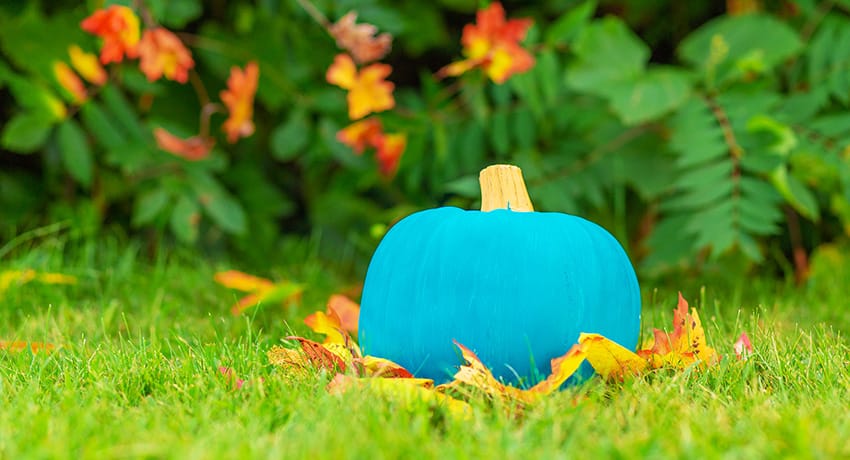Halloween participants may notice different colored pumpkins outside homes or trick-or-treat buckets being toted around. While some colors may just be festive, others have a special meaning behind them.
Colored pumpkins
Colorful pumpkins on a doorstep or porch can signal to trick-or-treaters different things. Here are a few well-known colors:
Teal: Originally started by the Teal Pumpkin Project, this color means that the home has non-food treats available to hand out. Instead of candy, a child with food allergies can receive small toys or items.
Purple: The Purple Pumpkin Project began as a way to raise awareness for epilepsy. If a home has this color pumpkin outside, it could mean either that someone who lives there has the condition or they know how to respond to an epileptic seizure.
Pink: Pink pumpkins are in support of breast cancer awareness. This could mean that a person in the home is a survivor, knows someone who is a survivor, or is currently undergoing treatment.
Colored candy buckets
Teal: Like the colored pumpkins, if a child has a teal bucket it can mean that they are suffering from food allergies and may want non-food treats like stickers, pencils, or glow sticks.
Purple: Similar to the purple pumpkins, this color bucket can indicate the child has epilepsy.
Blue: A blue bucket may signify that a child is on the autism spectrum. These trick-or-treaters might not be able to say “Trick or treat!” or can appear “too old” to be participating. Experts urge kindness and acceptance in situations like these, as all children deserve to enjoy Halloween.

“The idea behind these colored pumpkins and buckets is rooted in a way to help families with children with all types of special health care needs navigate a night of trick-or-treating with a little less stress, and more patience and understanding,” said Anson Koshy, MD, developmental-behavioral pediatric specialist with UT Physicians.
While the pandemic has been a concerning and frustrating event, Koshy believes it is also a great teaching moment for children.
“I think it is a great time for all parents to help kids reflect on why things may look different this year,” said Koshy, who is also the Raghuthaman Family Professor in Pediatric Neurology and Developmental & Behavioral Pediatrics at McGovern Medical School at UTHealth. “By doing this, we can recognize, and more importantly try to empathize at least in a small way, with what it may be like for families of children with special health care needs or disabilities – the way they must problem-solve and adapt to situations that are difficult to control.”



